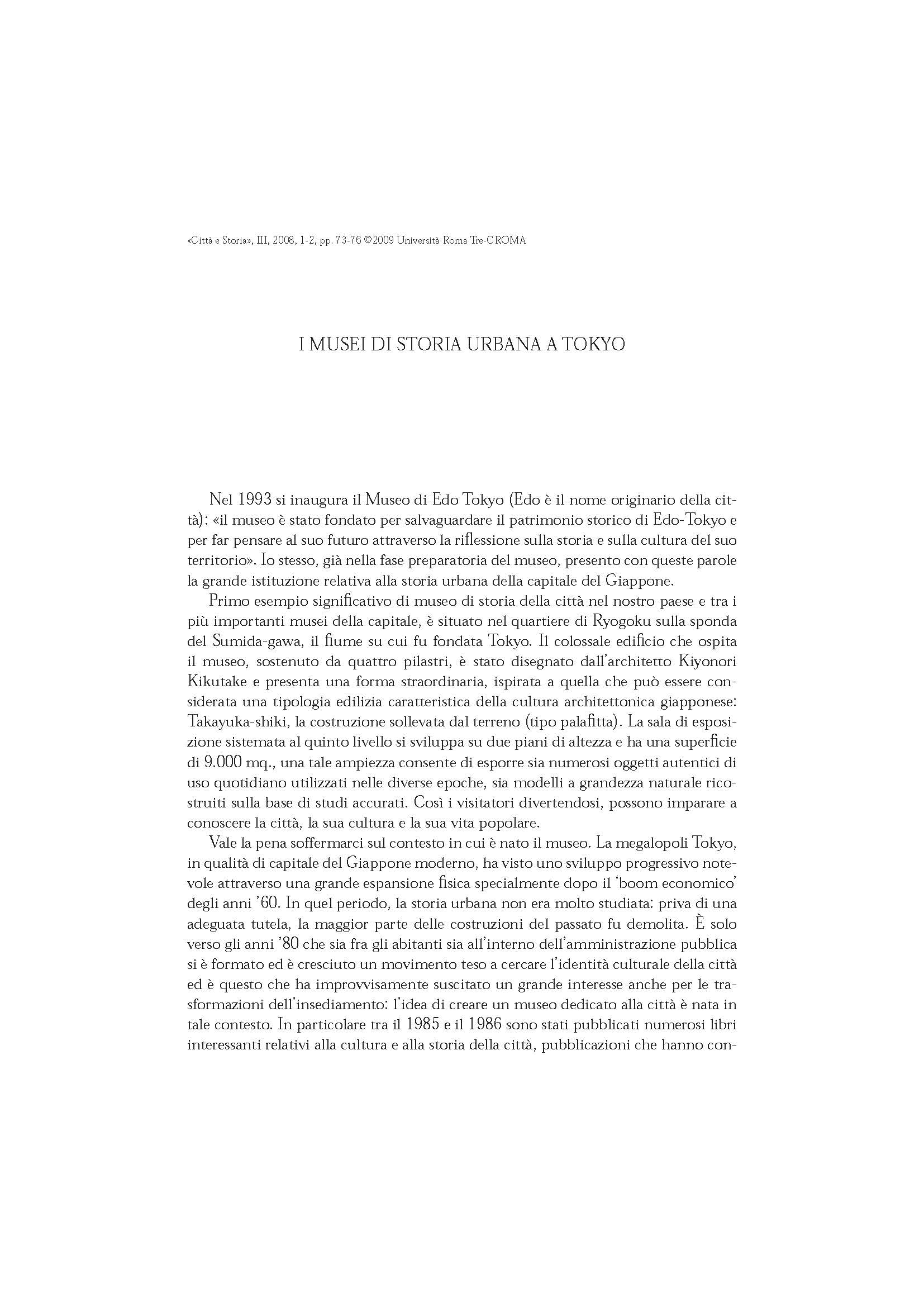I musei di storia urbana a Tokyo
6,00 €
In about 1980, the era of affluence finally arrived via the course of post-war robust growth. Even in Tokyo where the mainstream had been to promote steadfast modernization, there was now a reinforced movement to seek cultural identity, igniting a stronger interest in urban history. From here was conceived the concept of the Edo Tokyo Museum, and in 1993, it was realized in Ryogoku along the banks of Sumida River.
It was the establishment of the «Edo-Tokyology» that led to the inception of this museum. Until then, feudal Edo and modern Tokyo had been perceived as two different historical study subjects. The Edo-Tokyology broke away from this convention to explore the history and culture of Edo and Tokyo from a single united perspective. Museum visitors are able to enjoy and learn about the city and culture of Edo-Tokyo and the everyday life of the people back then through the rich collection of many large, reconstructed to the actual-size models that are an evidence of the careful investigative research, and items and objects used by the people then.
In addition, small, local museums are being built in every ward and city in greater Tokyo, and they play a very active role in the community. We hope that these local museums will continue to promote in-depth researches into the indigenous characteristics of their communities.
In about 1980, the era of affluence finally arrived via the course of post-war robust growth. Even in Tokyo where the mainstream had been to promote steadfast modernization, there was now a reinforced movement to seek cultural identity, igniting a stronger interest in urban history. From here was conceived the concept of the Edo Tokyo Museum, and in 1993, it was realized in Ryogoku along the banks of Sumida River.
It was the establishment of the «Edo-Tokyology» that led to the inception of this museum. Until then, feudal Edo and modern Tokyo had been perceived as two different historical study subjects. The Edo-Tokyology broke away from this convention to explore the history and culture of Edo and Tokyo from a single united perspective. Museum visitors are able to enjoy and learn about the city and culture of Edo-Tokyo and the everyday life of the people back then through the rich collection of many large, reconstructed to the actual-size models that are an evidence of the careful investigative research, and items and objects used by the people then.
In addition, small, local museums are being built in every ward and city in greater Tokyo, and they play a very active role in the community. We hope that these local museums will continue to promote in-depth researches into the indigenous characteristics of their communities.

